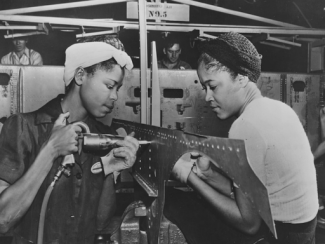
Rosie the Riveter was an iconic image of working women who entered the U.S. workforce during World War II. But something wasn’t right about a steel-eyed white woman in a bandana being the “face” of the workforce.
Honestly?
Black women were “Rosies,” too! Many left behind demeaning work as domestics and sharecroppers for war-effort jobs as railroad conductors and non-manual labor roles like computer scientists.
It wasn’t easy, though.
Whites resisted Black women entering a well-paying workforce. Many employers refused to hire any Black folks, but our folks weren’t having it.
Mary McLeod Bethune and A. Phillip Randolph pushed the issue to the president’s desk until racial discrimination was banned in the defense industry. This legislation helped.
But it wasn’t the end all be all.
Our women were paid 10 to 15 cents an hour less than white men, received fewer benefits, and were banned from joining unions. Today, Black women are still grossly underpaid–we shouldn’t still be dealing with this.
We should never forget that the U.S. doesn’t move without us.
Despite how white supremacy loves to make it seem like we’re “lazy” or “nobody wants to work anymore,” our people have always worked tirelessly, literally building the U.S. and other nations. They need us, we don’t need them.